This post contains a detailed look at one scenario in SaGa Frontier. As such, it contains a lot of spoilers. Given SaGa Frontier Remastered just came out this year, and you may have missed it the first time, just giving you a head’s up.
 This is important: how gay is Asellus?
This is important: how gay is Asellus?
I admit that, in my teen years, I was frustratingly heteronormative. Or, put another way, I watched the entirety of Revolutionary Girl Utena, and picked up on exactly zero subtext. This was true for nearly all media consumed, and, until roughly the release of Final Fantasy 13 in 2009, I consistently assumed gay characters did not exist unless they were starring in a “very special episode” of Friends. And, to blame my environment and not my own ignorance, outright homosexual (or, heavens forbid, trans) representation primarily only existed at the time as jokes or characters that were designated as “the token gay”. It may be hard to understand now, but it took us a long time (and many awful Futurama episodes) to get to the point where a character could just “casually” be gay, and it not be the entire focus of their existence. Is it any wonder that, in such an environment, an oblivious Goggle Bob would fail to pick up on context clues?
But, dang, even my dumbass younger self noticed that Asellus is gay as hell.
So how did such a thing happen? Let’s take a detailed look at Asellus in the context of SaGa Frontier and 1997 in general.
How was this allowed?
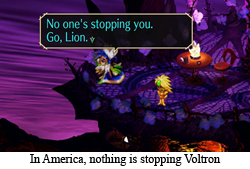 Let us consider a few things of note. Japan did have some significant, deliberately queer JRPGs in its past (Eternal Filena comes immediately to mind). America, however, did not. If something was remotely “gay”, it did not make it across the Pacific. In fact, any and all queerness was ironed out of any Japanese imports across media, so Japan appeared to be some kind of shining bastion of acceptance thanks to gay Sailor Moon characters being forcefully transformed into women and/or cousins upon localization. The idea of Japan being a gay utopia was eventually disproven by reality, but, when looking at all the imports that had to be “de-gayed” for American audiences, it is easy to see how the West looked so much more homophobic by comparison.
Let us consider a few things of note. Japan did have some significant, deliberately queer JRPGs in its past (Eternal Filena comes immediately to mind). America, however, did not. If something was remotely “gay”, it did not make it across the Pacific. In fact, any and all queerness was ironed out of any Japanese imports across media, so Japan appeared to be some kind of shining bastion of acceptance thanks to gay Sailor Moon characters being forcefully transformed into women and/or cousins upon localization. The idea of Japan being a gay utopia was eventually disproven by reality, but, when looking at all the imports that had to be “de-gayed” for American audiences, it is easy to see how the West looked so much more homophobic by comparison.
But SaGa Frontier had a rare opportunity to break through in 1997. Asellus is a gay main character, but she is not the main character. Asellus stars in her own story, but she is one of seven stories available. Additionally, Asellus is not required in any other story but Emelia’s adventure, so that means Asellus may not even exist for a healthy 71.4% of the game (completely missing for most characters, but at least optional for Red). There are really good odds you could play through a significant portion of SaGa Frontier and never see Asellus. And it is not like Asellus is out and proud on the title screen here. Her story starts gay and only escalates from there, but her appearances literally everywhere else do not trip any heteronormative alarms. She is a woman with green hair in a JRPG! Happens all the time!
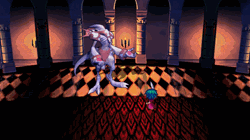 But even beyond her “stealth”, the most obvious reason other games did not make it while Asellus was able to be imported was simple… and it is the same color as Asellus’s hair. Squaresoft had a gigantic, once in a company’s lifetime hit on its hands with Final Fantasy 7. Final Fantasy 7 had been promoted from here to the Earth’s core, and that gambit paid off, as Final Fantasy became a household name that sold more Playstations than Lara Croft. SaGa Frontier did not receive the same marketing push, but it seemed obvious that, with its stark-white CD case and “40 hours of gameplay” bullet point, it was trying to ride the Final Fantasy 7 tide. And, let’s be real here: it worked. I do not personally know anyone that was playing PSX games at that time that did not at least rent SaGa Frontier. It is only the turbo nerds that ever tried Final Fantasy Legend on the Gameboy, but I know quite a few people that bumbled around with Lute on their way to Metal Gear Solid.
But even beyond her “stealth”, the most obvious reason other games did not make it while Asellus was able to be imported was simple… and it is the same color as Asellus’s hair. Squaresoft had a gigantic, once in a company’s lifetime hit on its hands with Final Fantasy 7. Final Fantasy 7 had been promoted from here to the Earth’s core, and that gambit paid off, as Final Fantasy became a household name that sold more Playstations than Lara Croft. SaGa Frontier did not receive the same marketing push, but it seemed obvious that, with its stark-white CD case and “40 hours of gameplay” bullet point, it was trying to ride the Final Fantasy 7 tide. And, let’s be real here: it worked. I do not personally know anyone that was playing PSX games at that time that did not at least rent SaGa Frontier. It is only the turbo nerds that ever tried Final Fantasy Legend on the Gameboy, but I know quite a few people that bumbled around with Lute on their way to Metal Gear Solid.
And, like any trend, Square did not want to see SaGa Frontier delayed and missing that surge of Final Fantasy 7 love. So Asellus had to make her way over to America, and she had to be as intact as she was in her original, Japanese release (we will get into the details of that shortly). The usual Western censors were ignored (probably did not hurt that this was not on a Nintendo system), and we got SaGa Frontier at its SaGa Frontieriest.
Is Asellus Gay?
Wait, we may have skipped a step here. We have been operating on the hypothesis that Asellus is gay because… what? 1997 Goggle Bob thought she was different? No, we can do better than that. Let’s begin by looking at the end.
Asellus has three endings, and they are all fairly significant in length. This is notable in SaGa Frontier, as some characters have endings that are practically four dialogue boxes (Red comes to mind), while others barely have an ending at all (say hello, Blue). The fact that Asellus has three wildly different endings is substantial, and shows how much thought went into her journey as a character. In one ending, Asellus embraces her unique status as a “Half Mystic”, and becomes an eternally young woman who pals around with the friendly Mystics (like the mermaid) for the rest of time. Then there is the ending where Asellus embraces her Mystic side wholly, and she becomes an evil queen that has her own harem.
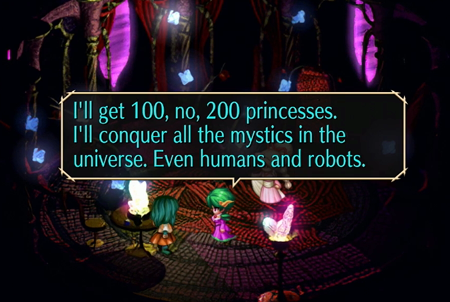
Asellus is a lesbian that is going to have “100, no 200 princesses”. That is, statistically, as gay as it gets. And, lest you think this is just a matter of Asellus suddenly having a Pokémon-esque desire to catch ‘em all and stick all her lovely princesses on a shelf, she assures her “first princess” Gina that they will “have eternal joy together”. Remarkably straightforward!
Did she just become gay and evil?
Well… uh… kinda.
She is definitely evil by the end here, but she was gay already!
Let’s take a step back to look at Asellus’s whole story. Asellus is a normal girl who is crushed by horse-drawn carriage. The owner of said carriage, the Mystic Orlouge, seems to feel bad about this, so he somehow transfers his own magical blue blood to Asellus. Asellus then sleeps for over a decade, and awakens as a new, first-in-the-world, purple blooded “Half Mystic”. Unfortunately, Orlouge is not as generous as his blood transfusion would imply, and it turns out that Orlouge is a powerful Mystic that has enslaved at least 60 “princesses” (and three princes, for some reason). Orlouge, aka the Charm Lord, does not allow any of his “property” to leave his chateau without permission, so Asellus has now become an unwilling captive. Because pacing around a magical castle for hours would be a pretty boring videogame (though it did work for Mario), Asellus escapes, and is pursued by Orlouge’s forces. Later, after a particularly upsetting loss, Asellus decides to go on the offensive, and storms Orlouge’s castle to free herself and all the captured princesses once and for all. And, while the finale and Asellus’s reasons change to match the ending that is ultimately “chosen” at that point, all roads inevitably lead to Asellus fighting and killing her Mystic-daddy.
There is a lot to unpack there.
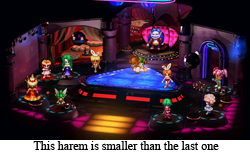 Practically from his introduction, Orlouge is established as “bad”. He is unchecked aristocracy that rules over and seemingly torments his court of Mystics and the neighboring town of humans. He kidnaps women to “convert” them into his lovers, and he seems to catalogue and “stow” his princesses in coffins when he is no longer interested in them. Lion Princess is summoned exclusively because he needed some muscle, and Princess White Rose is summoned because Asellus needed a tutor. Otherwise, stay in your box, dear. And Orlouge is in control thanks to his raw, unearned power. Orlouge has the ability to permanently kill any of the otherwise immortal Mystics, so everyone is afraid of his wrath. Orlouge is evil, and Asellus outright states that she fears becoming evil because she now has Orlouge’s blood coursing (/cursing) through her veins.
Practically from his introduction, Orlouge is established as “bad”. He is unchecked aristocracy that rules over and seemingly torments his court of Mystics and the neighboring town of humans. He kidnaps women to “convert” them into his lovers, and he seems to catalogue and “stow” his princesses in coffins when he is no longer interested in them. Lion Princess is summoned exclusively because he needed some muscle, and Princess White Rose is summoned because Asellus needed a tutor. Otherwise, stay in your box, dear. And Orlouge is in control thanks to his raw, unearned power. Orlouge has the ability to permanently kill any of the otherwise immortal Mystics, so everyone is afraid of his wrath. Orlouge is evil, and Asellus outright states that she fears becoming evil because she now has Orlouge’s blood coursing (/cursing) through her veins.
So when one ending sees Asellus become a tyrant that is stated to be “worse than Orlouge”, it is implied that this was not merely Asellus’s decision, but also Orlouge’s blood taking control. Did this mean that any impulses towards “princess collection” was based on Orlouge’s biological influence?
Did purple blood make Asellus gay?
That girl was always gay.
Technically, because of a magical coma, Asellus is 29. However, she was Mystic-fied when she was 17, so she is basically a teenager. And, while we know practically nothing about her life before the accident (she lived in Shrike with some generic older relative), we see literally everything that happens to her from the time she reawakens. And, let’s be real here: she acts exactly like a young woman that maybe just realized she was gay because she was introduced to a pretty princess that is wearing a hat made of roses. Yes, there are points in the game where Asellus is surprised by her own sexuality, like when she finds a porno…

She literally states she is ashamed of herself for feeling her heart pounding when looking at a nudie mag. That’s perfectly, natural, Asellus! Don’t worry about it!
That’s your evidence for her sexuality?
Oh, fine. There is the whole of her story and her interactions with everyone around her, too.
First and most obviously, there is Princess White Rose. While Asellus has multiple routes out of her captivity (at least in Remastered), there is one constant: White Rose always comes with her. And, when they are pursued by Orlouge’s forces, it is implied that White Rose is always fighting side by side with Asellus (even if you, ya know, dump her out of the party the minute you get a sixth member). And when White Rose literally sacrifices her life so Asellus can escape The Shadow Realm The Dark Labyrinth, Asellus is inconsolable as she admits that she loved White Rose. Does she claim she loved her simply as a “friend and sister”? Yes, but Zozma had to goad Asellus into admitting that fact at all. It is abundantly clear that Asellus is in denial about her deeper feelings for White Rose, the princess that had been with her through thick and thin, who was then unceremoniously traded for a turnip (SaGa Frontier is weird sometimes).
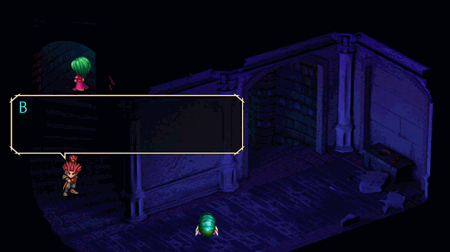
And then there is Gina. Gina is the narrator for Asellus’s tale, and comments on how she initially imagined the Half Mystic for whom she was tailoring was a handsome prince, and not a princess. But do not worry! She does take time to note that her “prince” is still extremely attractive, even though she did not possess the anatomy she was expecting. Then, after Gina sticks around the plot long enough to narrate Asellus’s adventures outside Gina’s own Root Town, she is kidnapped by Orlouge’s court for political intrigue reasons. It is expected that the player will steer Asellus toward rescuing Gina from her monster-based confinement, but even if you choose to ignore poor Gina, she pops up in every available ending. If Asellus becomes the new Charm Lord, Gina is her first princess. If Asellus lives and dies as a human, it is Gina looking over her grave and lamenting her lost friend. And in the Half Mystic ending, it is revealed that Gina’s narration has been her telling Asellus’s tale to her grandchildren, and her son asks “mom” if she is waiting to see “the love of [her] life”. And when said love does make an appearance a moment later, Gina is properly elated at seeing her immortal girlfriend. Gina’s feelings for Asellus, whether she becomes an evil queen, mundane human, or something in between, are one constant across the many possible outcomes of Asellus’s quest.
And if you think all of this is happening because there is a severe lack of man-meat available on Asellus’s menu, take a look at Zozma.
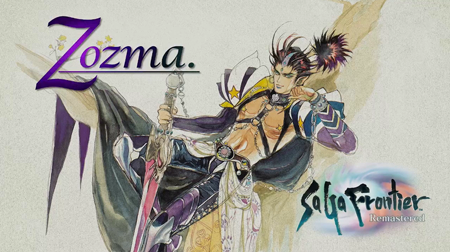
She doesn’t make a pass at him once. Dude is physically incapable of hiding those abs, and Asellus does not spare him so much as a glance.
So is there any evidence Asellus is straight?
We have not directly addressed Asellus’s “human” ending. If Asellus decides to forsake her Mystic blood entirely (which, incidentally, means Asellus will have the lowest stats possible for defeating an additional optional boss or two), she will earn the “human” finale. In this ending, her eternal friends discuss how she gave up her own immortality for a chance at a mundane life. She did not become a queen, and a series of photographs are shown in reverse chronological order, from a grandma sitting on her couch with two later generations, back to a teenage redhead in front of her home playing with a dog. There is also a snap of Asellus getting married, theoretically explaining the origin of kids and grandkids in other pictures.
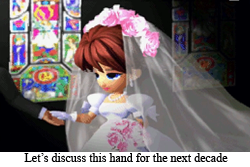 Except… we have no idea if Asellus actually married a man. The picture simply shows that she married an arm clad in a black sleeve. While a male groom that eventually provided the genetic material for Asellus to breed her brood is the simplest explanation for that arm, it really could be anyone. Her “husband” does not appear in any other pictures (which just feature Asellus playing alone with the kids as they grow), and “he” similarly does not appear at the bride’s grave. Mystics are there. Gina is there. But the family from these photographs does not appear at all.
Except… we have no idea if Asellus actually married a man. The picture simply shows that she married an arm clad in a black sleeve. While a male groom that eventually provided the genetic material for Asellus to breed her brood is the simplest explanation for that arm, it really could be anyone. Her “husband” does not appear in any other pictures (which just feature Asellus playing alone with the kids as they grow), and “he” similarly does not appear at the bride’s grave. Mystics are there. Gina is there. But the family from these photographs does not appear at all.
In other words, the directors of SaGa Frontier could not commit to Asellus even having one romantic heterosexual relationship in her life. “The Groom” could have been any generic dude, but he does not appear at all in any capacity beyond an arm. And given Asellus wears a pile of roses for her ceremony, you may well confirm she had someone in particular on her mind, anyway…
So Asellus’s whole story is about learning to be okay with being gay?
Not quite. Now that we have the whole of the “Remaster” to restore what was cut (but still mostly findable in the original code) from the Playstation release of SaGa Frontier, we can see the full shape of Asellus’s story.
The moral? Gay or straight, man or woman, you can still be a dick.
The original SaGa Frontier Asellus story was incredibly straightforward: Evil King imprisons Heroine, Heroine escapes, Heroine is chased, Heroine returns to fight Evil King. Easy peasy, though with the corollary that all Mystics are portrayed as “taking sides” with or against Asellus, and any humans that happen to exist are optional cruft from other protagonists’ stories. But there were always the nuggets of Asellus’s “full” story blocked behind unused flags. Now Asellus has the option of escaping the harem of Lord Orlouge, and running straight into the clutches of a harem owned by an equally malevolent human man. Now Asellus can encounter a Lesser Mystic that is trying to gain power by experimenting on hapless victims, and she can encounter a human woman that is trying to gain power by experimenting on hapless victims (but while wearing a lab coat). No story in SaGa Frontier is all that long, but the new (always intended) additions to Asellus’s story flesh out her world and the choice she ultimately makes. Should she save Gina? 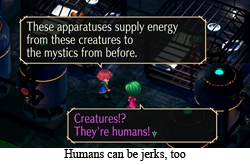 In the original, all humans are good and pure. In SaGa Frontier Remastered, however, there is the distinct chance that “good” Gina will turn out to be just as corrupt as many of the other humans that Asellus has encountered. Is it worth saving someone that would ultimately turn around and attempt to confine you? Do you want to fight for someone that would judge you as a menacing other?
In the original, all humans are good and pure. In SaGa Frontier Remastered, however, there is the distinct chance that “good” Gina will turn out to be just as corrupt as many of the other humans that Asellus has encountered. Is it worth saving someone that would ultimately turn around and attempt to confine you? Do you want to fight for someone that would judge you as a menacing other?
So why does it matter that Asellus is gay?
Asellus may or may not be a canon lesbian (or bi, for that matter), but her tale is certainly a metaphor. Asellus wakes up at 17 and meets the right people to force her to admit that she has feelings that she does not fully understand. Asellus might not be gay, but she is unmistakably queer. And the fact that that truly is unmistakable is huge for a 1997 game. It is huge for a teenager playing the game twenty years ago, and it is huge for an adult playing the game three Playstations later. It is memorable. It is important. And Asellus not appearing on every “Top 20 Gay Characters in Gaming” list for the last two decades is a crime. SaGa Frontier deserves recognition for an excellent story about a topic that is still relevant today.
So has anyone noticed Asellus?
Well, SaGa Frontier Remastered noticed SaGa Frontier.
The original SaGa Frontier featured a “Developer Room” akin to what you would find in Final Fantasy 4 or Chrono Trigger. If you have never visited such hallowed halls, simply imagine a dungeon where the staff of your favorite videogame have written themselves into the place, and now they are NPCs with canned dialogue about missing too much sleep while working on the thing. In SaGa Frontier Remastered, if you clear any of Fuse’s storylines, you may visit a Developer Room for the new staff that distinctly worked on the Remaster. And it seems that most of the workforce wrote themselves into the game to gush about how much they enjoyed the original SaGa Frontier, and are now proud of working on SF:R. Fans becoming the curators of the series! Woohee!
And this ties nicely into the one hero that apparently is a fan. Fuse was cut from the original SaGa Frontier as a main character, but restored for Remastered. We have no way of knowing what was originally intended as Fuse’s story (there is a novel out there floating around that is probably pretty close), but now Fuse acts as a sort of “capper” for each of the seven main stories. And, in most cases, his contributions to other protagonists’ stories is to take a more “goofy” look at the intricacies of their adventures. For instance, Fuse kidnaps the friggen Time Lord to keep him safe from Blue, or calls BlackX out on being an idiot that cannot recognize Red’s secret identity. However, Fuse seems to play Asellus’s scenario completely straight, with the only comic relief coming from an optional perversion of a bad time for White Rose. And why is Fuse so serious for this adventure? Because he was a young’un when Asellus first “died” twelve years back, and her “case” is what inspired the boy to become a hero. In other words, Fuse saw Asellus when he was a kid, and it changed his life.
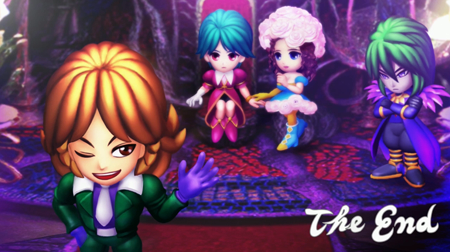
And that’s pretty gay.
FGC #599.2 SaGa Frontier (Remastered)
- System: I cannot emphasize enough how playing the Remastered version of SaGa Frontier is important to Asellus’s story. But I guess the PSX version will do in a pinch if you are stuck in the late 20th century.
- Number of players: One green-haired girl against the world.
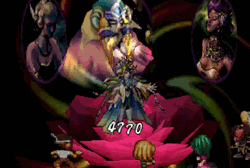 The Trans Metaphor: You could also easily make Asellus out to be a trans metaphor, too. The original script apparently even had Asellus voicing concerns about Orlouge’s blood transforming her into a man (even magic blood doesn’t work like that, dear). However, that may be a matter of Asellus trying to biologically/mentally justify why she keeps thinking about White Rose after the incinerator incident. End of the day, Asellus is 100% queer as heck, and if you want to interpret that on a different part of the queer spectrum, go for it.
The Trans Metaphor: You could also easily make Asellus out to be a trans metaphor, too. The original script apparently even had Asellus voicing concerns about Orlouge’s blood transforming her into a man (even magic blood doesn’t work like that, dear). However, that may be a matter of Asellus trying to biologically/mentally justify why she keeps thinking about White Rose after the incinerator incident. End of the day, Asellus is 100% queer as heck, and if you want to interpret that on a different part of the queer spectrum, go for it.- Cutting Room Floor: Asellus had obviously cut content in the original SaGa Frontier release, and it appears it has all been restored for the remake. Hooray! And, while we now have partially naked White Rose (you do look better than ever without your stupid hat, dear), the lack of “restored content” in the other scenarios all but confirms that SaGa Frontier really was a mostly complete game at its original release. So, yes, Blue eternally palling around Hell was always supposed to make you sad. Now take that off your “Top 10 Worst Videogame Endings” list, please.
- Favorite Scenario: Oh, gee, you think Asellus might be it?
- Favorite Character: Second place goes to Emelia, who has always had my attention, because she lives in a pastiche of Charlie’s Angels/The A-Team. And she wears a bunny costume. I am a simple, mostly straight man. Though, speaking of which, when Rufus freakin’ roofies Emmy so she will cooperate with the mission of being sold into a harem… uh.. That hits a bit differently nowadays.
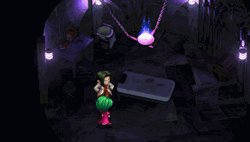 Did you know? Lute technically fights to avenge his father. Red definitely fights to avenge his father. Blue fights for fratricide. Emelia is trying to find her fiancée’s murderer. Asellus is trying to escape eternal servitude. Riki is trying to save his realm. And T260G is trying to stop a millennia-old doomsday weapon that could wipe out all life across the planet(s). Gee, who has the most important task here?
Did you know? Lute technically fights to avenge his father. Red definitely fights to avenge his father. Blue fights for fratricide. Emelia is trying to find her fiancée’s murderer. Asellus is trying to escape eternal servitude. Riki is trying to save his realm. And T260G is trying to stop a millennia-old doomsday weapon that could wipe out all life across the planet(s). Gee, who has the most important task here?- Would I play again: I played the Remastered version until I nearly Platinumed the damn thing (no, I will not be taking the time to figure out which items I did or did not purchase, thank you, achievements). SaGa Frontier Remastered really does make a good game much better, and I now have much more fond feelings for the whole experience. That said, I am a little tired of it now. Maybe we will give it another go in twenty years?
What’s next? Random ROB has chosen to take the day off from true randomness, and we are going to take a look at a game very close to my heart for our landmark 600th entry. Want a hint? Well, I’m gonna take you for a ride. Please look forward to it!
[…] ver. 1.22474487139… is the best dang Square Enix rerelease to come out this past Spring (sorry, SaGa). It takes a game that was previously extremely of its time, and transports it to a glorious future […]